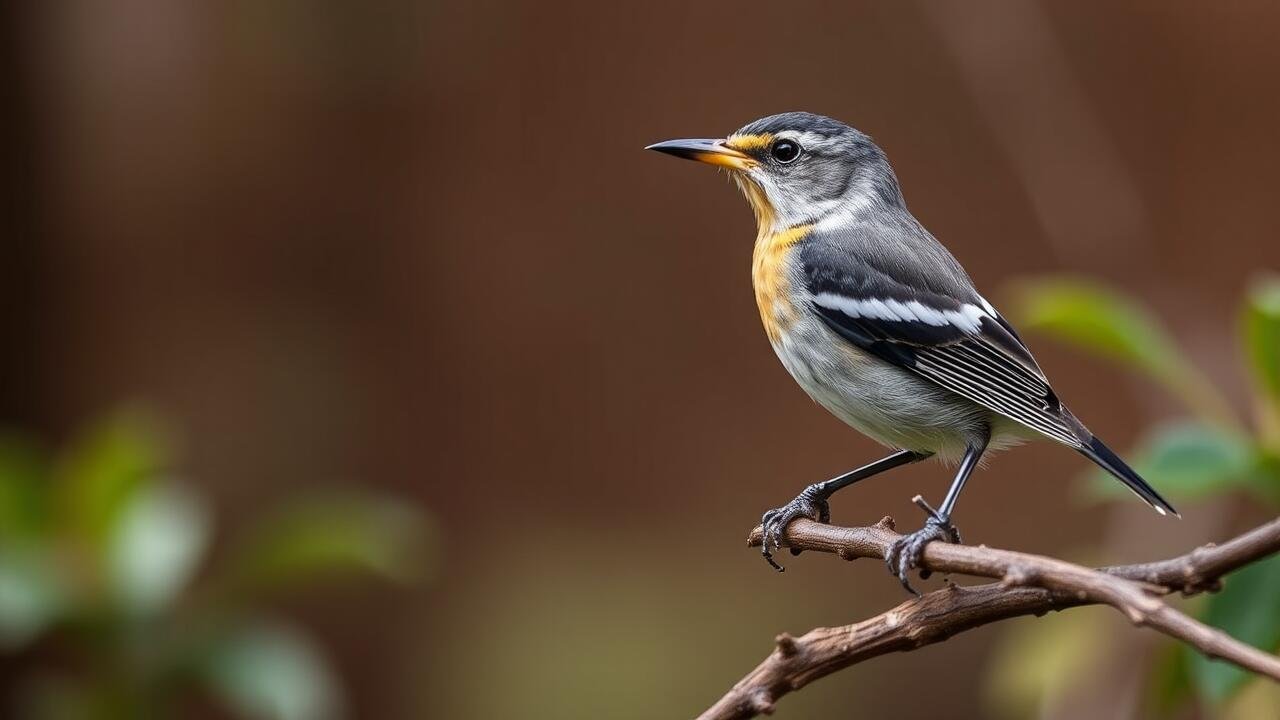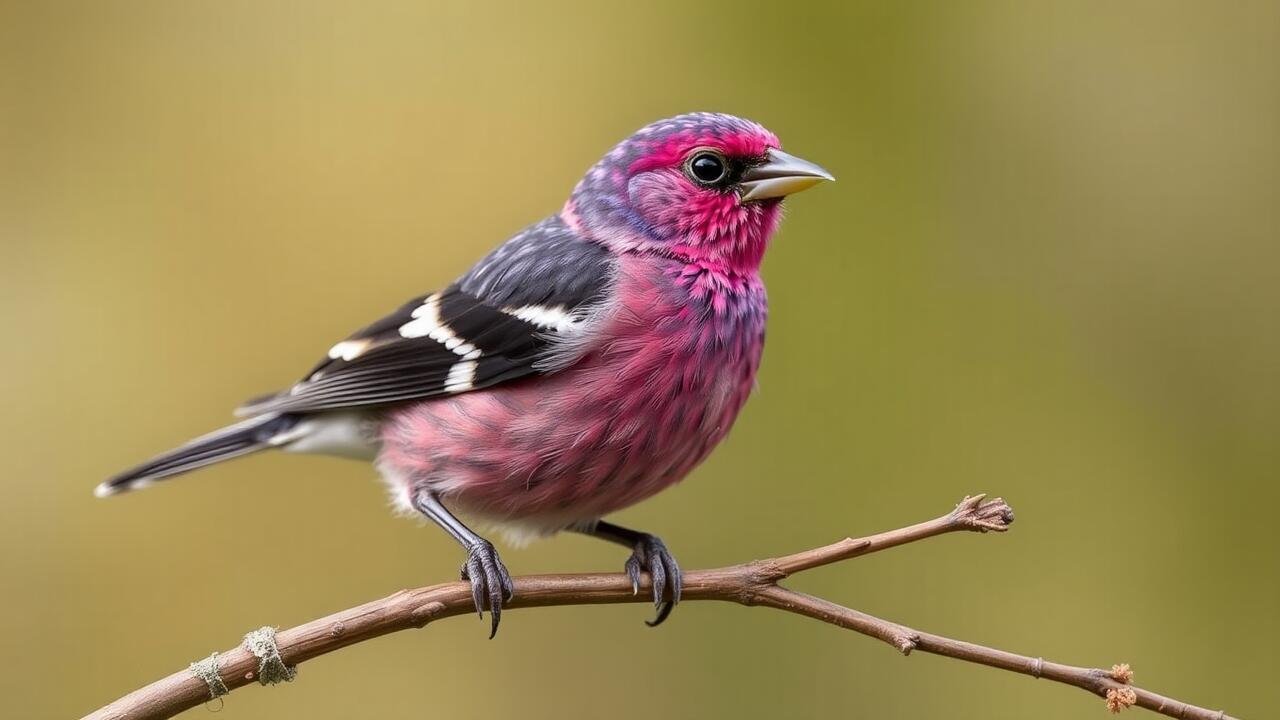Table Of Contents
Blue Jay Vs Bluebird: Key Differences Between Blue Jays And Bluebirds | Blue Jay vs Bluebird: Discover the Key Differences Between Blue Jays and Bluebirds
Key Takeaways
- Distinctions between Blue Jays and Bluebirds
- Preferences for living environments
- Eating patterns and food sources
- Breeding and nesting habits
- Sounds and methods of communication
- Social interactions and behaviors
Blue Jay Vs Bluebird Key Differences Between Blue Jays And Bluebirds
Physical characteristics are a significant aspect of the Blue Jay vs Bluebird: Key Differences Between Blue Jays and Bluebirds. The Blue Jay is known for its vibrant blue plumage accented with white and black, while bluebirds, including eastern bluebirds and western bluebirds, boast a more understated appearance with softer blues and warmer underparts. Blue Jays are larger and have a more pronounced crest on their heads, giving them a striking silhouette compared to the more delicate frame of the bluebird. These visual distinctions play a vital role in identifying these beautiful birds in their natural habitats. Understanding these differences enhances the appreciation of their unique beauty and behaviors.
Blue Jay vs Bluebird: Key Differences Between Blue Jays and Bluebirds | Physical Characteristics
The physical characteristics of blue jays and bluebirds provide a clear distinction between these two species. Blue jays are larger, typically measuring around 9 to 12 inches in length, with striking blue and white plumage along with a distinctive crest on their heads. In contrast, the western bluebird and mountain bluebirds showcase softer hues, primarily featuring vibrant shades of blue with warm orange or rust-colored accents on their chests. This difference in size and color makes it easier for birdwatchers to identify blue jays versus bluebirds in various environments.
Examining the bill shape reveals further differences. Blue jays possess a strong, sturdy bill that helps them crack open hard seeds and acorns. This adaptation supports their varied diet, which often includes nuts and fruits. On the other hand, bluebirds, especially the mountain bluebird, have a more slender, pointed bill, designed for catching insects in mid-air. These physical traits highlight the divergence in lifestyle between blue jays and bluebirds, emphasizing the key differences between these two captivating bird species.
| Characteristic | Blue Jay | Bluebird |
|---|---|---|
| Size | 9 to 12 inches | 6.5 to 8 inches |
| Plumage Color | Striking blue and white with a distinctive crest | Vibrant blue with orange or rust accents |
| Bill Shape | Strong and sturdy, ideal for cracking seeds | Slender and pointed, ideal for catching insects |
| Diet | Nuts, fruits, seeds | Insects, berries, fruits |
| Habitat | Forests, parks, residential areas | Open fields, orchards, grasslands |
Behavioral Traits
The northern blue jay exhibits a more assertive and aggressive demeanor compared to the common bluebird. Jays are known for their intelligence and complex social structures, often foraging in groups and communicating through a variety of calls. This contrasts sharply with the behavior of bluebirds, which tend to be more solitary and exhibit a calmer demeanor. Understanding the behavioral traits reveals significant insights into the Blue Jay vs Bluebird: Key Differences Between Blue Jays and Bluebirds.
Blue Jays display a wide range of vocalizations, often using their distinctive calls to establish territory or alert others to potential threats. In contrast, the royal blue coloration of the bluebird is often accompanied by softer, melodious calls that resonate in open fields. Observing these vocal patterns and behaviors highlights the unique characteristics that set these two bird species apart. This provides further clarity on the Blue Jay vs Bluebird: Key Differences Between Blue Jays and Bluebirds.
Habitat Preferences
Understanding the habitat preferences of these birds is crucial for birders interested in the Blue Jay vs Bluebird: Key Differences Between Blue Jays and Bluebirds. Blue Jays typically prefer wooded areas, parks, and suburban regions where they can find both cover and food, displaying their adaptability. In contrast, Eastern Bluebirds, which are also songbirds, favor open fields, meadows, and lowland areas, seeking out spaces where they can easily hunt for insects. This divergence in habitat allows for a distinction between bluejays and bluebirds, as their preferred environments significantly influence their behavior and interaction with the surrounding ecosystem. Both species exhibit unique adaptations that highlight the importance of habitat in their lives, making them fascinating subjects for study among bird enthusiasts.
- Blue Jays thrive in wooded areas, parks, and suburban settings.
- They are highly adaptable, making use of various environments.
- Eastern Bluebirds are commonly found in open fields and meadows.
- These bluebirds prefer habitats with low vegetation for hunting insects.
- The habitat choices of each species influence their feeding habits.
- Understanding these preferences can enhance birdwatching experiences.
- Observing their interactions with their habitats can provide insights into their behaviors.
Blue Jay Habitat
Blue Jays thrive in a variety of habitats, including deciduous and mixed forests, open woodlands, and residential areas. They often choose regions with plenty of trees for nesting, as they prefer to build their birds’ nests in dense foliage. This contrasts with the habitat choices of the Eastern Bluebird, which favor open fields and pastures. Observing the similarities and differences can enhance the understanding of avian ecology. Steller’s jay, closely related to the Blue Jay, shares some habitat preferences but is typically found in higher elevation forests.
Blue Jays are known to be highly adaptable, often spotted near human populations where they can access bird feeders and gardens. Their strong affinity for oak trees is evident, as these trees provide acorns, a staple in their diet. Unlike crows, which are often seen scavenging in urban environments, Blue Jays are more selective about their feeding locations. The contrast between the habitats of Blue Jays and Bluebirds showcases the diverse ecological niches these birds occupy, emphasizing the Blue Jay vs Bluebird: Key Differences Between Blue Jays and Bluebirds.
Eastern Bluebird Habitat
Eastern bluebirds thrive in open habitats with scattered trees, such as farmlands, parks, and suburban areas. These environments provide plenty of perches for hunting insects. Unlike blue jays, which are often seen visiting bird feeders, bluebirds prefer natural foraging spots. They are drawn to gardens with native plants that support their insect diet. The presence of birdbaths can also attract these resident birds, as they seek out water sources for drinking and bathing.
Nesting opportunities are crucial for Eastern bluebirds. They commonly utilize birdhouses set up in open fields or near edges of woodlands. These structures mimic natural cavities where bluebirds prefer to lay their eggs. Understanding the differences in habitat preferences between blue jays and bluebirds sheds light on their unique adaptations. In the context of Blue Jay vs Bluebird: Key Differences Between Blue Jays and Bluebirds, it’s evident that while blue jays may frequent backyard feeders, bluebirds flourish in more natural settings.
Feeding Habits
The dietary preferences of Blue Jays and Bluebirds reveal significant contrasts highlighting the Blue Jay vs Bluebird: Key Differences Between Blue Jays and Bluebirds. Blue Jays are omnivorous, often foraging for a diverse range of foods, including acorns and insects found among oak trees. Their striking cerulean blue wings are not only a visual delight but also help them blend into their surroundings while they search for food. In contrast, Bluebirds primarily consume insects and berries, feeding their nestlings with a diet rich in protein during the early stages of life. Understanding these distinct feeding habits provides insight into the ecological roles these birds play in their respective habitats.
- Blue Jays enjoy a varied diet including nuts, seeds, and small fruits.
- They are known to cache food, storing acorns for later use during winter months.
- Bluebirds are particularly fond of mealworms and other small invertebrates.
- During the breeding season, Bluebirds increase their insect intake to support their young.
- Both species benefit from the presence of trees and open fields which provide food sources.
- Blue Jays are known for their intelligence and ability to adapt their feeding strategies.
- While Blue Jays may scavenge from feeders, Bluebirds prefer to hunt for food in the wild.
Diet of Blue Jays
Blue Jays are omnivorous birds with a diverse diet that reflects their adaptable nature. They primarily consume insects, acorns, and fruits, which they often find in trees and shrubs. This foraging behavior showcases their impressive wingspan, allowing them to navigate through dense foliage while searching for food. The vibrant plumage of the Blue Jay also plays a role in its feeding habits, as their striking colors can help them blend into the natural environment.
Understanding the feeding habits of Blue Jays provides insight into their role in the ecosystem. Unlike their smaller counterparts, the Bluebird, Blue Jays are known for their opportunistic eating habits, which include raiding nests for eggs and young birds. This behavior distinguishes them within the broader context of Blue Jay vs Bluebird: Key Differences Between Blue Jays and Bluebirds, as their diets significantly influence their nesting and reproductive strategies.
Diet of Bluebirds
Bluebirds primarily feed on insects, fruits, and berries, showcasing their preference for a diet rich in protein and carbohydrates. Different bluebird species, such as the Eastern Bluebird, often hunt for insects by perching on a low branch and swooping down to catch their prey. This method highlights the distinctions between bluebirds and blue jays, as blue jays tend to have a more varied diet that includes larger nuts and seeds. The differences bluebirds exhibit in feeding habits can further illuminate the Blue Jay vs Bluebird: Key Differences Between Blue Jays and Bluebirds.
Fruits make up a significant portion of the bluebird’s diet, especially during the fall and winter months. Bluebirds will forage for berries, often flocking together to find sources of food, which sets them apart from the more solitary feeding habits of blue jays. Observing the diet of bluebirds provides insight into their ecological role and emphasizes the blue jay vs bluebird: key differences between blue jays and bluebirds. Understanding these dietary preferences can enhance one’s appreciation of the unique adaptations each bird possesses.
Nesting and Reproduction
Nesting habits showcase distinct differences between Blue Jays and bluebirds. Blue Jays typically build their nests in trees, using a variety of materials such as twigs, leaves, and even plastic items, showcasing their adaptability. In contrast, bluebirds consist of several species, with the Eastern Bluebird being the most recognized. These bluebirds often prefer to nest in open fields or orchards, seeking cavities in trees or man-made structures like birdhouses.
The male bluebird is known for its vibrant coloration and engaging behavior during the breeding season, often singing bluebird songs to attract a mate. The differences in nesting and reproductive strategies highlight the unique adaptations of each bird type, ultimately emphasizing the Blue Jay vs Bluebird: Key Differences Between Blue Jays and Bluebirds.
Nesting Habits of Blue Jays
Blue jays typically build their nests in the dense foliage of trees, often opting for oaks or pines. Their nests are generally bulky and constructed using twigs, grass, and other plant materials. This differs significantly from the nesting habits of the mountain bluebirds, which prefer open areas for their nesting sites. The contrasting environments chosen by these two species highlight an important aspect of the Blue Jay vs Bluebird: Key Differences Between Blue Jays and Bluebirds.
The blue jay plumage often serves to camouflage their nests among the leaves, helping to protect them from predators. These common blue jays are known for their intelligence and can sometimes be seen raiding the nests of other birds for eggs or young chicks. This behavior further emphasizes the differences highlighted in the Blue Jay vs Bluebird: Key Differences Between Blue Jays and Bluebirds. Their resourcefulness in nesting sites and parental care showcases their adaptability in various habitats.
Nesting Habits of Eastern Bluebirds
Eastern bluebirds exhibit specific nesting behaviors that distinguish them from their relatives. Female bluebirds seek out natural cavities or create nests in sheltered spots like tree branches or fence posts. They typically build their nests with grasses, pine needles, and other plant materials. The presence of blue jay subspecies in the area can influence nesting choices, as blue jays share their habitats with eastern bluebirds, sometimes leading to competition for suitable nesting sites.
The female bluebird lays a clutch of three to seven bluebird eggs, which are usually a lovely pale blue color. After laying eggs, she incubates them for about two weeks, while the male is often nearby, defending their territory. This nesting ritual is essential for understanding the Blue Jay vs Bluebird: Key Differences Between Blue Jays and Bluebirds, highlighting varying nesting strategies and behavioral patterns between these two species. The mountain bluebird range further showcases how environmental factors play a role in nesting preferences among bluebird populations.
| Stage of Nesting | Description | Duration |
|---|---|---|
| Nest Selection | Female bluebirds search for natural cavities or safe locations for nesting. | Varies, depending on the availability of sites |
| Nest Building | Nests are constructed using grasses, pine needles, and other plant materials. | Approximately 1 week |
| Egg Laying | Clutches consist of 3 to 7 pale blue eggs. | 1-2 days for laying |
| Incubation | The female incubates the eggs while the male guards their territory. | About 14 days |
Vocalizations and Communication
Blue Jays and bluebirds exhibit distinct vocalizations that reflect their differing behaviors and environments. Blue Jays are known for their diverse array of sounds, including harsh calls and melodic phrases, often used to communicate with their flock or warn others of danger. On the other hand, bluebirds produce softer, cheerful songs that often signify courtship or territory.
The physical differences also play a role in their vocalizations; while bluebirds have a rounder, plumper body shape, shorter wings, and tails, blue jays take on a more streamlined form, which adds depth to their vocal interactions. Understanding these vocal traits highlights the Blue Jay vs Bluebird: Key Differences Between Blue Jays and Bluebirds, showcasing how each species has adapted its communication methods to suit its lifestyle.

Sounds Made by Blue Jays
The vocalizations of Blue Jays are complex and varied, reflecting their intelligence and adaptability. They produce a range of sounds, from sharp, piercing calls to softer coos, which serve different purposes such as signaling danger or communicating with mates. This diversity in vocalization is one of the key differences between Blue Jays and Bluebirds, particularly noting that Blue Jays can mimic the calls of other birds and even some human-made noises. The distinctive sounds they make can be heard throughout their habitats, often where southerly Blue Jays are more prevalent.
Blue Jay size also plays a role in their vocalization, as their robust bodies project sound more effectively than their smaller counterparts, the Bluebirds. While blue plumage is a common trait shared by both species, their calls are unique, making it easier for birdwatchers to distinguish between them. The sounds made by Blue Jays can also be quite territorial, especially during nesting seasons when the presence of predators, such as those that might consume blue jay eggs, heightens their alertness. Understanding these distinctions enriches the appreciation of avian communication and behavior.
Calls of Bluebirds
The vocalizations of bluebirds are distinct yet melodic, setting them apart from related birds like the Blue Jay. While both species exhibit similar colours of blue in their feathers, bluebirds’ calls often sound like a series of cheerful notes. Their songs typically comprise soft and sweet phrases, which can evoke a sense of tranquility, contrasting with the more raucous calls of blue jays. This creates a unique audio landscape that highlights the differences between these two birds.
During the breeding season, male bluebirds become particularly vocal as they establish their territories and attract mates. Their calls are characterized by a rich, clear tone that echoes in open fields and grasslands, often punctuating the peaceful sounds of nature. This melodic communication is essential for signaling presence to potential partners and rivals alike, showcasing a beautiful display of sound that further illustrates the Blue Jay vs Bluebird: Key Differences Between Blue Jays and Bluebirds.
Social Behavior and Interactions
Understanding the social behavior and interactions of Blue Jays and Bluebirds reveals significant contrasts that distinguish these two species. Blue Jays are known for their complex social structures, often forming tight-knit family groups that engage in cooperative breeding and protect their territory aggressively. Their loud calls and varied vocalizations play a crucial role in communication among the jay pair, especially during nesting when they incubate their eggs. In contrast, Bluebirds tend to be more solitary, with males establishing distinct territories during the breeding season, often singing to attract mates.
As small birds, they share a more subdued demeanor, embodying a calm presence in their habitats. Recognizing these traits clarifies the Blue Jay vs Bluebird: Key Differences Between Blue Jays and Bluebirds, making it easier for enthusiasts to appreciate the unique social dynamics of these wild birds.

Blue Jay Social Structures
Blue Jays are known for their complex social structures, often forming tight-knit family units. These large songbirds exhibit behaviors such as cooperative breeding, where younger individuals assist in raising the chicks of their parents. In contrast to their more solitary counterparts, the Eastern Bluebirds, Blue Jays prioritize social interaction within their groups. Their dynamic social behaviors can often be observed in bird boxes, where they may compete or collaborate with other American birds.
Aggressive and territorial, Blue Jays will defend their nesting sites fiercely against intruders. This assertive behavior distinguishes them from the typically more peaceful Eastern Bluebirds. During migration periods, Blue Jays can be seen traveling in small flocks, reinforcing the social bonds they share. Understanding these dynamics provides insight into the Blue Jay vs Bluebird: Key Differences Between Blue Jays and Bluebirds, highlighting how social structures influence their behaviors and interactions.
Bluebird Social Dynamics
Bluebirds exhibit a relatively gentle social dynamic compared to their more aggressive counterparts, the Blue Jays. As common feeder birds, bluebirds prefer to forage in small flocks rather than dominating a single feeding area. Their deep blue uppersides and cheerful song make them a delight for birdwatchers. Unlike Blue Jays, which often assert their presence at bird feeders, bluebirds share resources amicably and rely on their short wings for quick, agile movements as they navigate their environment.
The social behavior of bluebirds also revolves around strong pair bonds during the breeding season. These birds engage in cooperative interactions that ensure successful nesting and raising of their young. While Blue Jays are known for their boisterous and sometimes territorial behavior, the bluebird’s demeanor fosters a more peaceful coexistence among local bird populations. This clear contrast highlights the Blue Jay vs Bluebird: Key Differences Between Blue Jays and Bluebirds, particularly in their social structures and interactions with one another.
Conclusion
The distinctions between Blue Jays and Bluebirds are striking, particularly in their physical characteristics and behaviors. Blue Jays are larger, with bold markings and a distinctive call, while Bluebirds present a more subdued appearance with softer tones. Both species have unique adaptations that suit their roles in the ecosystems they inhabit, often seen flitting among trees and foraging on the ground. Understanding the Blue Jay vs Bluebird: Key Differences Between Blue Jays and Bluebirds enhances our appreciation for these vibrant birds. Observing their interactions and habits reveals the intricacies of their lives and the importance of their roles in the environment.
FAQS
How do blue jays and bluebirds differ in terms of their behavior and nesting habits?
Blue jays are known to be aggressive birds, often consuming other birds’ nests and even bluebirds’ eggs. In contrast, whereas bluebirds enjoy a more peaceful existence and generally build their own nests, blue jays will often disturb the nests of other birds. Notably, it has been recorded that the blue jay consumes various food items, which may include the eggs of smaller birds. Blue jays can be seen visiting bird feeders frequently, whereas mountain bluebirds and Steller’s jay represent different species with unique behaviors and nesting habits. The bluebird male is characterized by similar colour blue in their plumage, but unlike blue jays, they do not have the same aggressive tendencies.
What are the characteristics of blue jays and bluebirds that influence their nesting preferences and behavior?
Blue jays and bluebirds exhibit distinct nesting habits that can be observed through their interactions with birds’ nests. For instance, whereas blue jays are known to be more aggressive and may often take over other birds’ nests, bluebirds typically build their own nests in tree cavities or man-made nest boxes.
Additionally, the recorded blue jay behavior includes their penchant for visiting bird feeders, especially during the breeding season when blue jays eggs are laid. Blue jays are recognized for their striking blue feathers and blue backs, while bluebirds, being less aggressive, have a gentler manner. When a jay pair incubate their eggs, they do so in a more protective manner than bluebirds, who may also migrate during certain seasons, making them a unique entry on the bird list for birdwatchers.
Do blue jays and bluebirds migrate, and how do their behaviors change when they visit bird feeders?
Yes, both blue jays and bluebirds migrate, though their migration patterns differ. Blue jays often migrate in large flocks and are known to visit bird feeders frequently during migration, seeking out seeds and nuts. In contrast, bluebirds may not rely as heavily on bird feeders, as they prefer to hunt insects and other natural food sources during their migration periods.
What are the primary physical characteristics that distinguish blue jays from bluebirds?
Blue jays are larger and have a more aggressive demeanor compared to the smaller, more gentle bluebirds. They have striking blue and white plumage, while bluebirds possess a softer blue hue on their backs and rusty-colored breasts.
What are the feeding habits of blue jays compared to bluebirds in their natural habitats?
Blue jays are known for their opportunistic feeding habits, often eating a varied diet that includes nuts, seeds, and insects, while bluebirds primarily feed on insects and berries. In their natural habitats, blue jays may also scavenge from bird feeders, exhibiting unique behaviors that differ from the more selective feeding patterns of bluebirds.

My name is Shane Warren, the author behind Chirping Birds Hub – your ultimate guide to the wonderful world of birds! Unleash your inner avian explorer as we delve into a vibrant library of knowledge dedicated to all things feathered. From learning about diverse bird species from across the globe to understanding their captivating habitats and behaviors, I’m here to fuel your passion for these magnificent creatures. Not only that, but I also provide valuable insights on being a responsible and informed pet bird owner. Join our vibrant community and let’s celebrate the feathered wonders of the world together – one chirp at a time.

